Sm.de (Removal Guide) - Free Instructions
Sm.de Removal Guide
What is Sm.de?
Sm.de is a dubious application that takes control of Google Chrome and other browsers
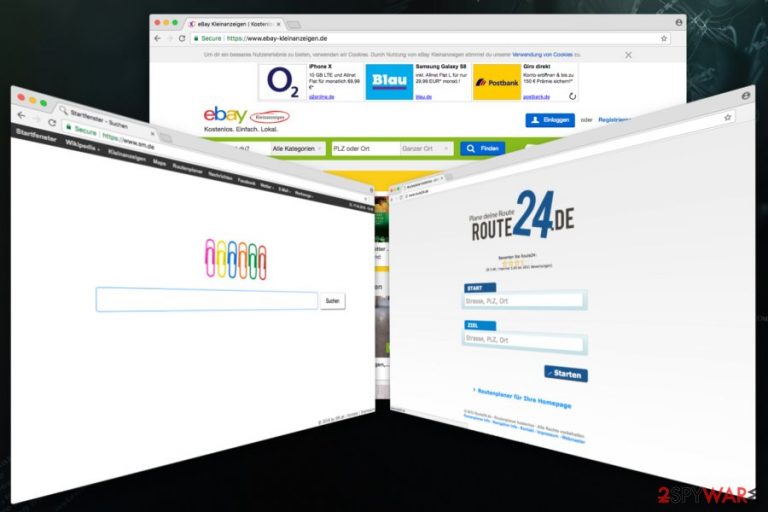
Sm.de is a browser hijacker[1] which is targeted towards German-speaking users. It was created by a developer called Aller Media e.K. that is responsible for a similar PUP – Startfenster.de. Typically, browser hijackers enter unsuspecting users’ machines via software bundling and instantaneously modify browser settings.
| SUMMARY | |
| Name | Sm.de |
|---|---|
| Type | Browser Hijacker |
| Language | German |
| Affected browsers | Google Chrome, Internet Explorer, Mozilla Firefox, Safari, Opera, etc. |
| Symptoms | Altered browser settings, intrusive advertisement, etc. |
| Distribution | Software bundling |
| You can delete Sm.de automatically by installing FortectIntego. Otherwise, you can check manual instructions below | |
Sm.de is devised to look like Google.com search engine. It has similar design and instead of Google logo users can see six paper clips painted in different colors. It is not a coincidence, as Sm.de developers try to make users subconsciously associate the hijacker with the most popular browser in the world.
Additionally, users can find a multitude of links to familiar websites, including eBay, Wikipedia, Bing Maps, various email providers, etc. For convenience, the date and time are added. However, all this additional functionality is merely an attempt to disguise the real purpose of a browser hijacker, which is bringing monetary benefit for Sm.de developers.
Hijacked browser effects can range from very minor annoyances to full-out malware infections. Nevertheless, the smartest move would be to remove Sm.de from your machine as quickly as possible. To do that, you can employ a robust anti-spyware tool like FortectIntego or any other program of your choice.
Sm.de hijack exhibits the following symptoms:
- Startup page, new tab URL and search engine are altered to hxxps://www.sm.de/. These changes are irreversible until the dubious app is uninstalled;
- Questionable redirects may lead to dangerous places on the internet, such as fake software, phishing, scam or hacked websites;
- Generated intrusive ads might block the background of legitimate sites;
- Search results can lead to sponsored websites;
- Additional extensions, add-ons, toolbars or other software might be installed without permission;
- The browser speed might be significantly diminished as background processes are regularly run to communicate with external servers to generate advertisements.
Sm.de virus authors do not care about and do not check the content of web pages you might be linked to. Therefore, the possibility of malware infections is quite high. If you are unlucky enough, ransomware might lock up your files and demand ransom to be paid for its release.
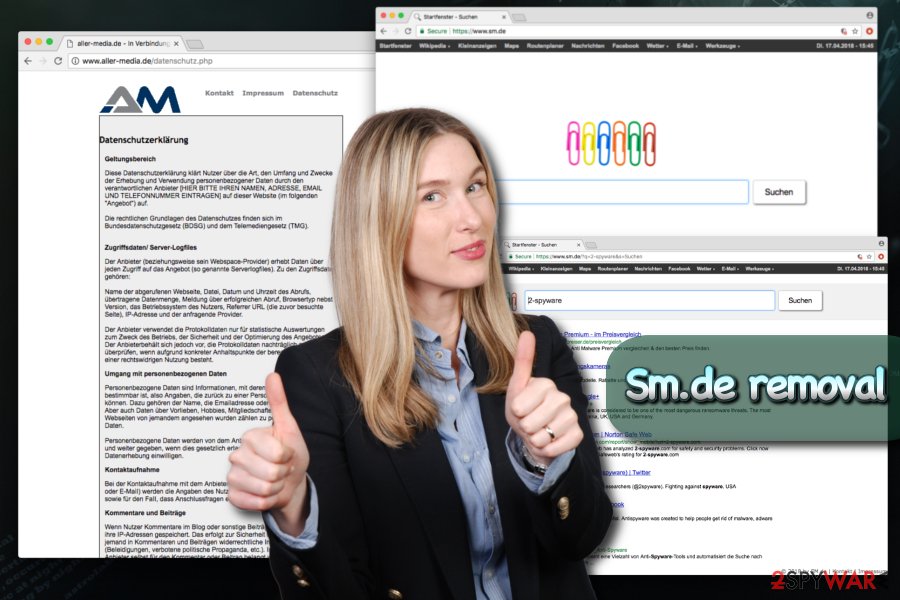
Additionally, a browser hijacker may gather a variety of personal and anonymous information about you. Hence, credentials that you enter while browsing through a hijacked browser might end up in cybercrooks’ hands. It goes without saying that such activity might leave your bank account empty or steal your identity[2] altogether.
To conclude, it is not wise to keep a potentially unwanted program on your PC, so Sm.de removal is an essential step to a safe and secure internet browsing.
Unwanted applications enter machines without giving much warning
Despite PUPs being deceptive when it comes to their distribution, it is entirely possible to avoid them in the first place. Indeed, you can never know what can happen on the internet as it is so vast. Nevertheless, if you will learn how to install freeware correctly, you will eliminate the most prevalent method of PUP transmission – software bundling.
Bundling is a well-known marketing technique used widely. It was first adopted by telecommunications, healthcare, financial services and many others. No wonder that software developers accommodated the practice swiftly.
Bundling works by adding additional components into one installer. However, if users rush steps but clicking “Next” quickly, they might not notice that they just accepted terms and conditions, agreeing to additional program installation.
To avoid that, security researchers from virusai.lt[3] recommend picking Advanced or Custom installation mode. The Recommended or Quick settings will not allow users to decline additional components in most cases.
Two different methods can be used for Sm.de removal
Sm.de removal can be performed by following our illustrated guide. We must warn you that this method requires your full attention as well as might take a significant amount of time. As soon as you eliminate all the suspicious components, you should reset all your browsers.
If you are looking for a quick solution – you should download and install robust anti-malware tool. Security software will help you to remove Sm.de without much effort and will protect your computer from further infections.
You may remove virus damage with a help of FortectIntego. SpyHunter 5Combo Cleaner and Malwarebytes are recommended to detect potentially unwanted programs and viruses with all their files and registry entries that are related to them.
Getting rid of Sm.de. Follow these steps
Uninstall from Windows
Instructions for Windows 10/8 machines:
- Enter Control Panel into Windows search box and hit Enter or click on the search result.
- Under Programs, select Uninstall a program.

- From the list, find the entry of the suspicious program.
- Right-click on the application and select Uninstall.
- If User Account Control shows up, click Yes.
- Wait till uninstallation process is complete and click OK.

If you are Windows 7/XP user, proceed with the following instructions:
- Click on Windows Start > Control Panel located on the right pane (if you are Windows XP user, click on Add/Remove Programs).
- In Control Panel, select Programs > Uninstall a program.

- Pick the unwanted application by clicking on it once.
- At the top, click Uninstall/Change.
- In the confirmation prompt, pick Yes.
- Click OK once the removal process is finished.
Delete from macOS
To eliminate Sm.de from Mac OS, follow these steps:
Remove items from Applications folder:
- From the menu bar, select Go > Applications.
- In the Applications folder, look for all related entries.
- Click on the app and drag it to Trash (or right-click and pick Move to Trash)

To fully remove an unwanted app, you need to access Application Support, LaunchAgents, and LaunchDaemons folders and delete relevant files:
- Select Go > Go to Folder.
- Enter /Library/Application Support and click Go or press Enter.
- In the Application Support folder, look for any dubious entries and then delete them.
- Now enter /Library/LaunchAgents and /Library/LaunchDaemons folders the same way and terminate all the related .plist files.

Remove from Microsoft Edge
Reset your MS Edge settings to default:
Delete unwanted extensions from MS Edge:
- Select Menu (three horizontal dots at the top-right of the browser window) and pick Extensions.
- From the list, pick the extension and click on the Gear icon.
- Click on Uninstall at the bottom.
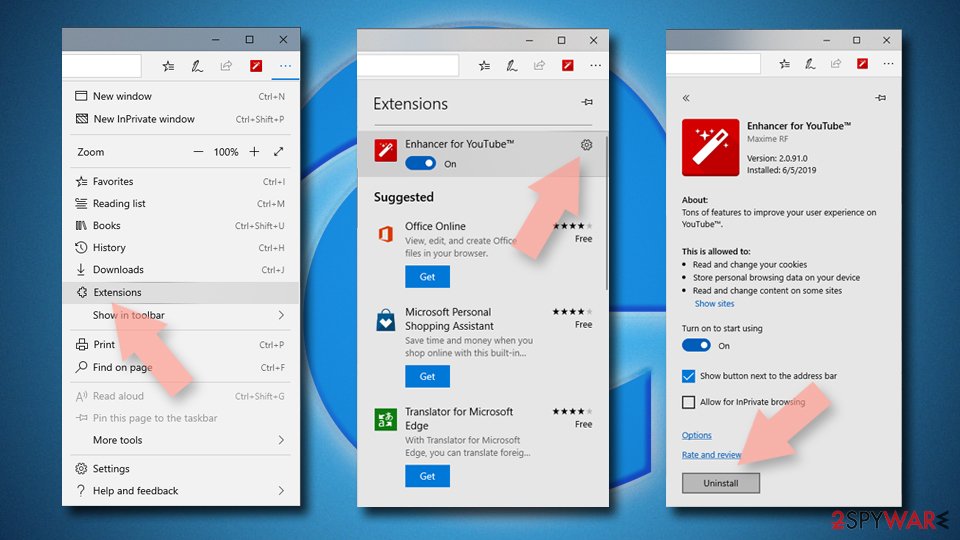
Clear cookies and other browser data:
- Click on the Menu (three horizontal dots at the top-right of the browser window) and select Privacy & security.
- Under Clear browsing data, pick Choose what to clear.
- Select everything (apart from passwords, although you might want to include Media licenses as well, if applicable) and click on Clear.
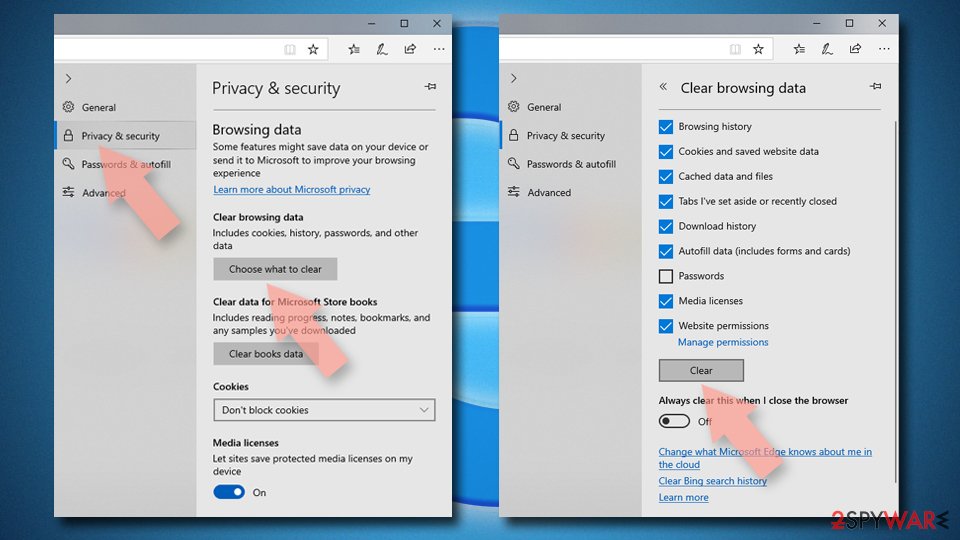
Restore new tab and homepage settings:
- Click the menu icon and choose Settings.
- Then find On startup section.
- Click Disable if you found any suspicious domain.
Reset MS Edge if the above steps did not work:
- Press on Ctrl + Shift + Esc to open Task Manager.
- Click on More details arrow at the bottom of the window.
- Select Details tab.
- Now scroll down and locate every entry with Microsoft Edge name in it. Right-click on each of them and select End Task to stop MS Edge from running.
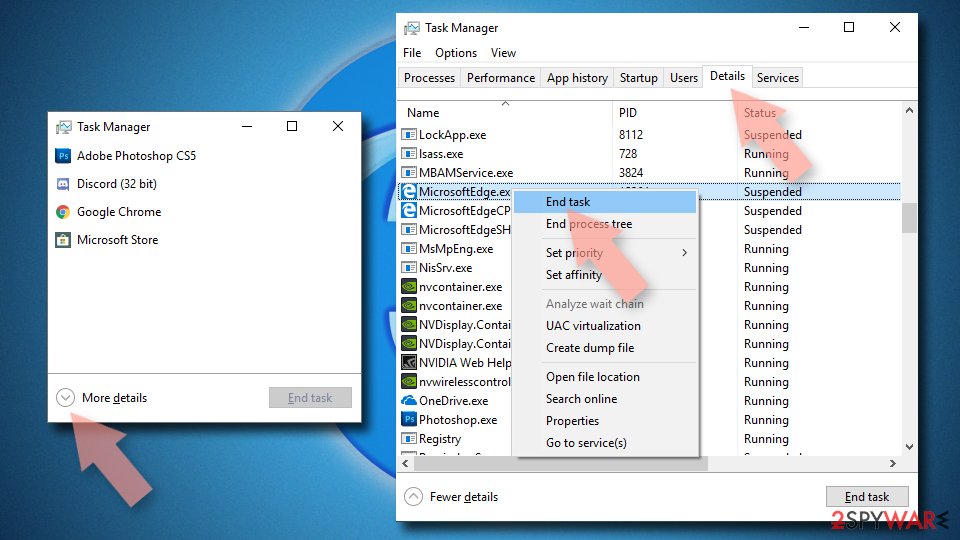
If this solution failed to help you, you need to use an advanced Edge reset method. Note that you need to backup your data before proceeding.
- Find the following folder on your computer: C:\\Users\\%username%\\AppData\\Local\\Packages\\Microsoft.MicrosoftEdge_8wekyb3d8bbwe.
- Press Ctrl + A on your keyboard to select all folders.
- Right-click on them and pick Delete

- Now right-click on the Start button and pick Windows PowerShell (Admin).
- When the new window opens, copy and paste the following command, and then press Enter:
Get-AppXPackage -AllUsers -Name Microsoft.MicrosoftEdge | Foreach {Add-AppxPackage -DisableDevelopmentMode -Register “$($_.InstallLocation)\\AppXManifest.xml” -Verbose

Instructions for Chromium-based Edge
Delete extensions from MS Edge (Chromium):
- Open Edge and click select Settings > Extensions.
- Delete unwanted extensions by clicking Remove.
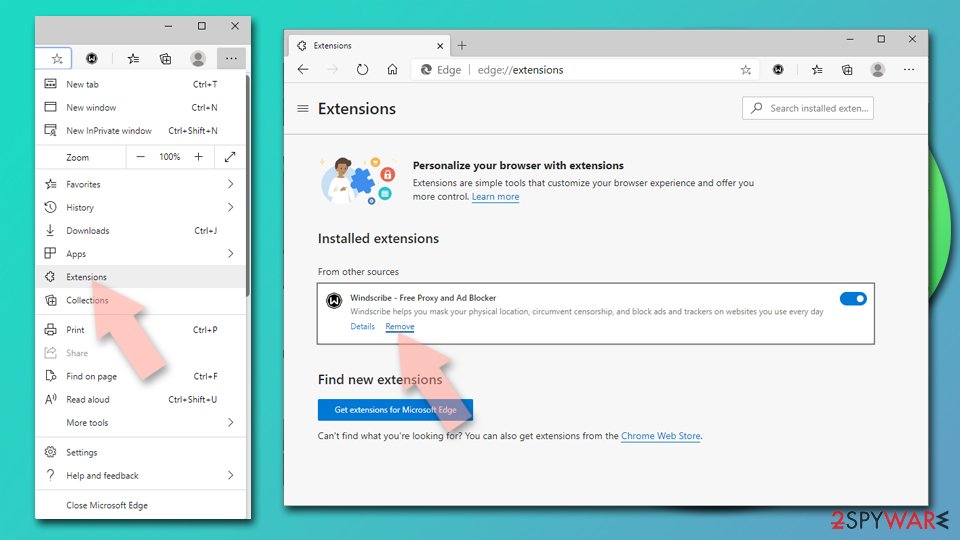
Clear cache and site data:
- Click on Menu and go to Settings.
- Select Privacy, search and services.
- Under Clear browsing data, pick Choose what to clear.
- Under Time range, pick All time.
- Select Clear now.
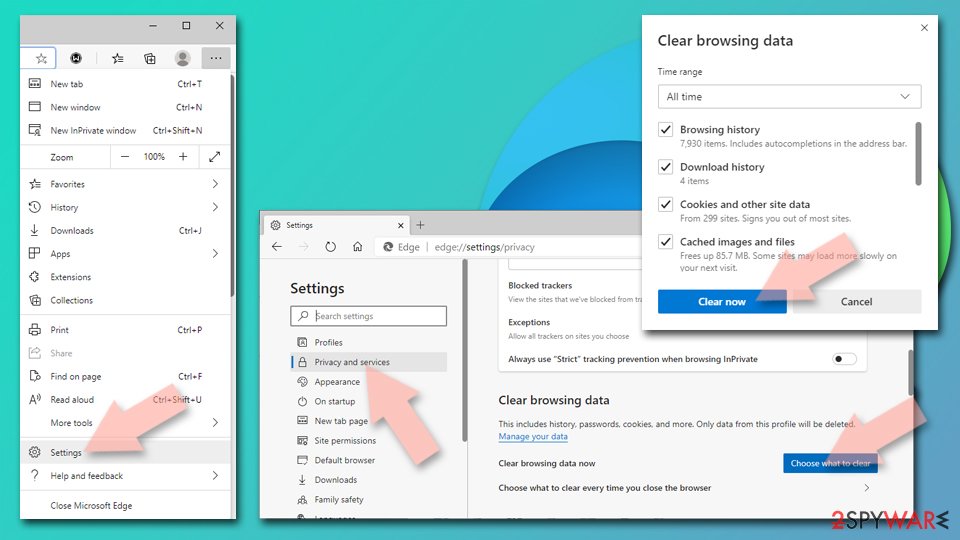
Reset Chromium-based MS Edge:
- Click on Menu and select Settings.
- On the left side, pick Reset settings.
- Select Restore settings to their default values.
- Confirm with Reset.
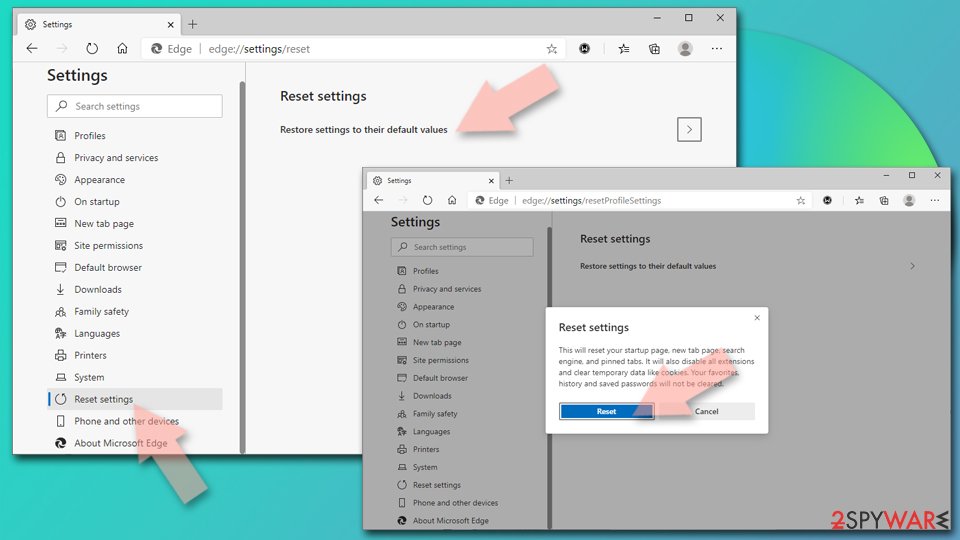
Remove from Mozilla Firefox (FF)
Remove dangerous extensions:
- Open Mozilla Firefox browser and click on the Menu (three horizontal lines at the top-right of the window).
- Select Add-ons.
- In here, select unwanted plugin and click Remove.

Reset the homepage:
- Click three horizontal lines at the top right corner to open the menu.
- Choose Options.
- Under Home options, enter your preferred site that will open every time you newly open the Mozilla Firefox.
Clear cookies and site data:
- Click Menu and pick Settings.
- Go to Privacy & Security section.
- Scroll down to locate Cookies and Site Data.
- Click on Clear Data…
- Select Cookies and Site Data, as well as Cached Web Content and press Clear.
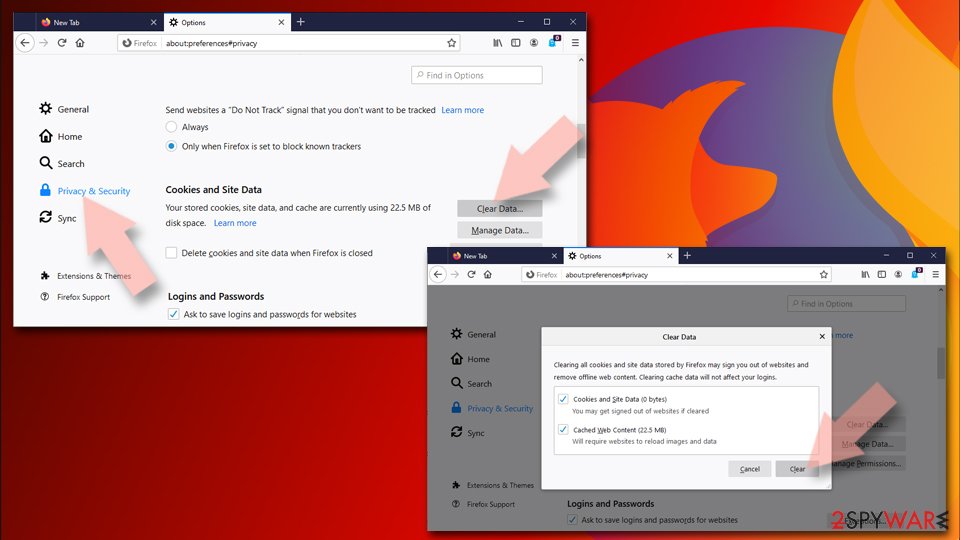
Reset Mozilla Firefox
If clearing the browser as explained above did not help, reset Mozilla Firefox:
- Open Mozilla Firefox browser and click the Menu.
- Go to Help and then choose Troubleshooting Information.
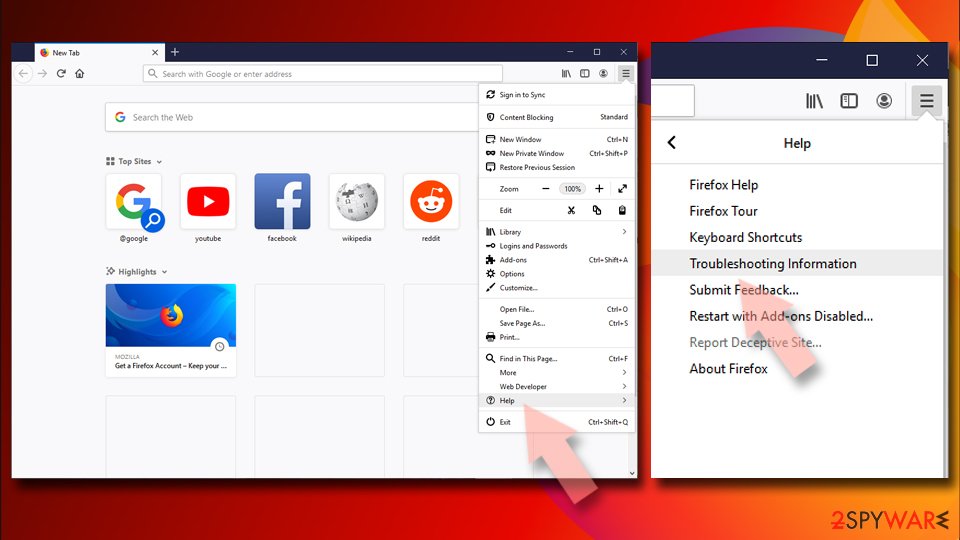
- Under Give Firefox a tune up section, click on Refresh Firefox…
- Once the pop-up shows up, confirm the action by pressing on Refresh Firefox.
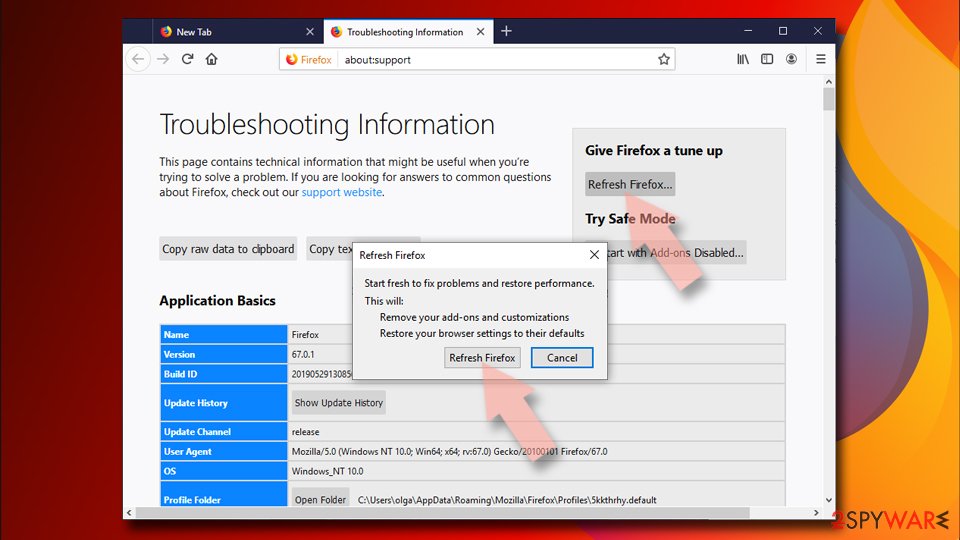
Remove from Google Chrome
Delete malicious extensions from Google Chrome:
- Open Google Chrome, click on the Menu (three vertical dots at the top-right corner) and select More tools > Extensions.
- In the newly opened window, you will see all the installed extensions. Uninstall all the suspicious plugins that might be related to the unwanted program by clicking Remove.

Clear cache and web data from Chrome:
- Click on Menu and pick Settings.
- Under Privacy and security, select Clear browsing data.
- Select Browsing history, Cookies and other site data, as well as Cached images and files.
- Click Clear data.

Change your homepage:
- Click menu and choose Settings.
- Look for a suspicious site in the On startup section.
- Click on Open a specific or set of pages and click on three dots to find the Remove option.
Reset Google Chrome:
If the previous methods did not help you, reset Google Chrome to eliminate all the unwanted components:
- Click on Menu and select Settings.
- In the Settings, scroll down and click Advanced.
- Scroll down and locate Reset and clean up section.
- Now click Restore settings to their original defaults.
- Confirm with Reset settings.
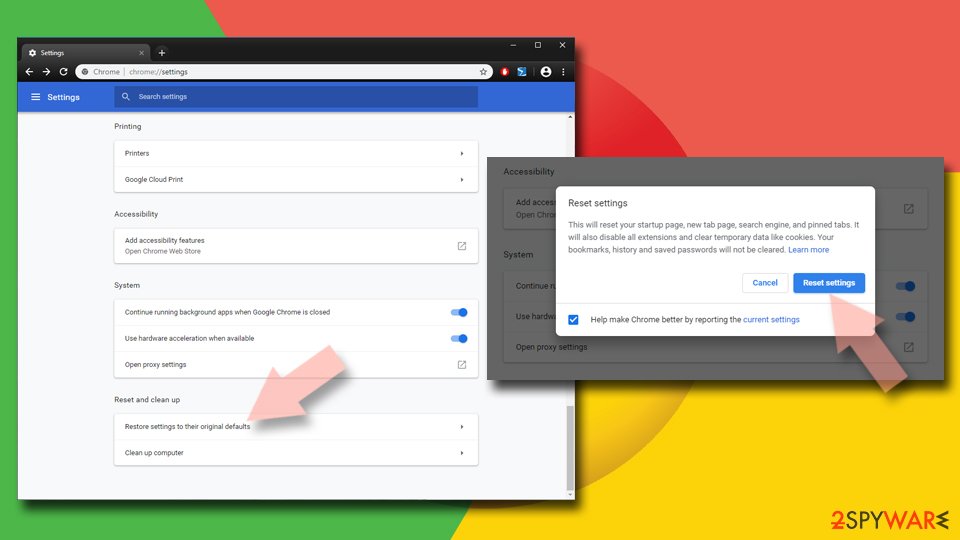
Delete from Safari
Remove unwanted extensions from Safari:
- Click Safari > Preferences…
- In the new window, pick Extensions.
- Select the unwanted extension and select Uninstall.
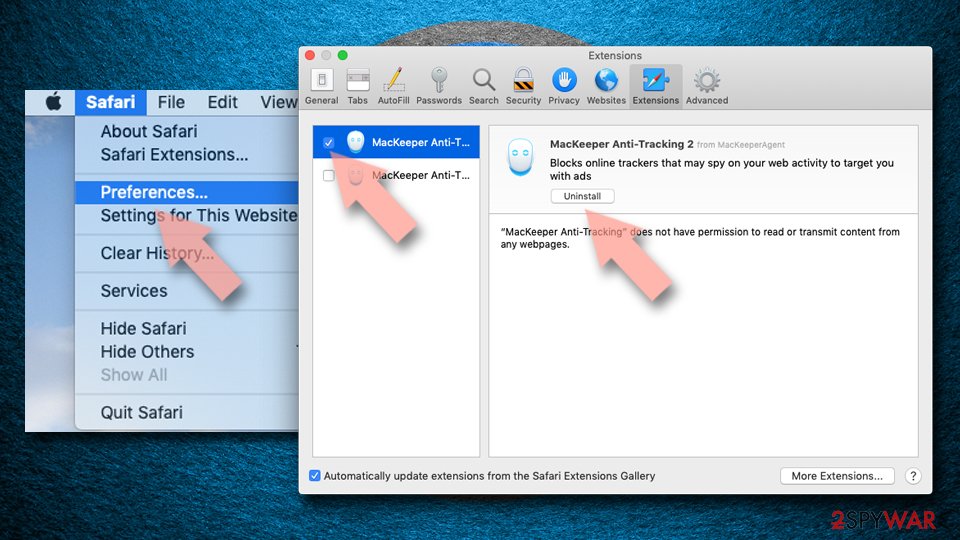
Clear cookies and other website data from Safari:
- Click Safari > Clear History…
- From the drop-down menu under Clear, pick all history.
- Confirm with Clear History.
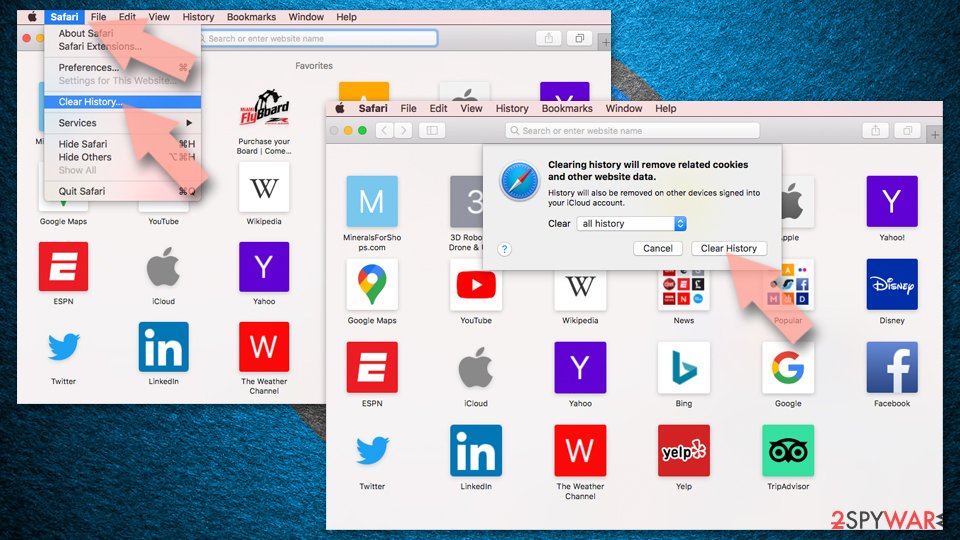
Reset Safari if the above-mentioned steps did not help you:
- Click Safari > Preferences…
- Go to Advanced tab.
- Tick the Show Develop menu in menu bar.
- From the menu bar, click Develop, and then select Empty Caches.
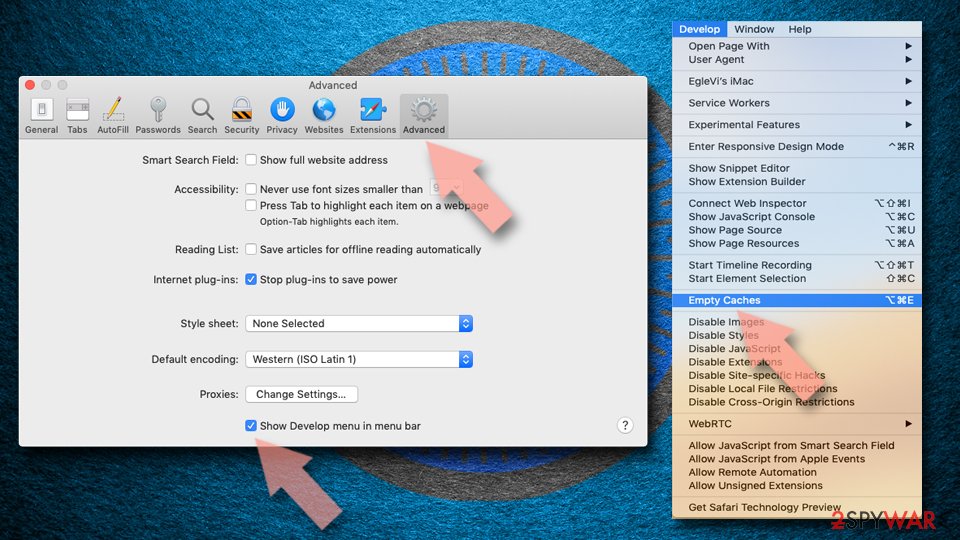
After uninstalling this potentially unwanted program (PUP) and fixing each of your web browsers, we recommend you to scan your PC system with a reputable anti-spyware. This will help you to get rid of Sm.de registry traces and will also identify related parasites or possible malware infections on your computer. For that you can use our top-rated malware remover: FortectIntego, SpyHunter 5Combo Cleaner or Malwarebytes.
How to prevent from getting stealing programs
Access your website securely from any location
When you work on the domain, site, blog, or different project that requires constant management, content creation, or coding, you may need to connect to the server and content management service more often. The best solution for creating a tighter network could be a dedicated/fixed IP address.
If you make your IP address static and set to your device, you can connect to the CMS from any location and do not create any additional issues for the server or network manager that needs to monitor connections and activities. VPN software providers like Private Internet Access can help you with such settings and offer the option to control the online reputation and manage projects easily from any part of the world.
Recover files after data-affecting malware attacks
While much of the data can be accidentally deleted due to various reasons, malware is one of the main culprits that can cause loss of pictures, documents, videos, and other important files. More serious malware infections lead to significant data loss when your documents, system files, and images get encrypted. In particular, ransomware is is a type of malware that focuses on such functions, so your files become useless without an ability to access them.
Even though there is little to no possibility to recover after file-locking threats, some applications have features for data recovery in the system. In some cases, Data Recovery Pro can also help to recover at least some portion of your data after data-locking virus infection or general cyber infection.
- ^ Browser hijacker. Technopedia. Site that helps to understand technology.
- ^ Identity theft. Wikipedia. The Free Encyclopedia.
- ^ Virusai. Virusai. Lithuanian cybersecurity news and articles.
